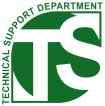Speakers
Mrs
A.L. PerrotMr
T. Wijnands
Description
In contrast with other accelerators at CERN, a large amount of technical equipment
will be located in the LHC tunnel, the underground areas and in the experimental
caverns where they will be exposed to radiation. Nearly all these equipment make, to
a certain extent, use of commercial microelectronics which is extremely sensitive to
radiation damage, both instantaneous damage and cumulative damage. Examples in the TS
Department are the electronics for the position sensors of the low beta quadrupoles,
the access system, the cooling and ventilation units, the electronics for the
electrical distribution, the oxygen deficiency monitors and fire detection systems.
The basic effects of radiation on electronic systems and components are well
understood because similar problems with radiation are encountered in the aerospace
and aviation industry. Since 1998, an efficient and original Radiation Tolerance
Assurance approach for the LHC machine has been established. Its aim is to minimise
the effects of radiation damage on the LHC performance.
In the LHC tunnel and underground areas, personnel, superconducting magnets,
electronic equipment and detectors will be exposed to radiation. This is why there
will be four different radiation monitoring systems in the LHC. The RADiation
MONitoring (RADMON) system presently developed in the TS/LEA group has been designed
to provide an early warning as the radiation levels at the location of the electronic
equipment in the tunnel, underground areas and experimental caverns increase.
Authors
Mrs
A.L. Perrot
Mr
T. Wijnands
